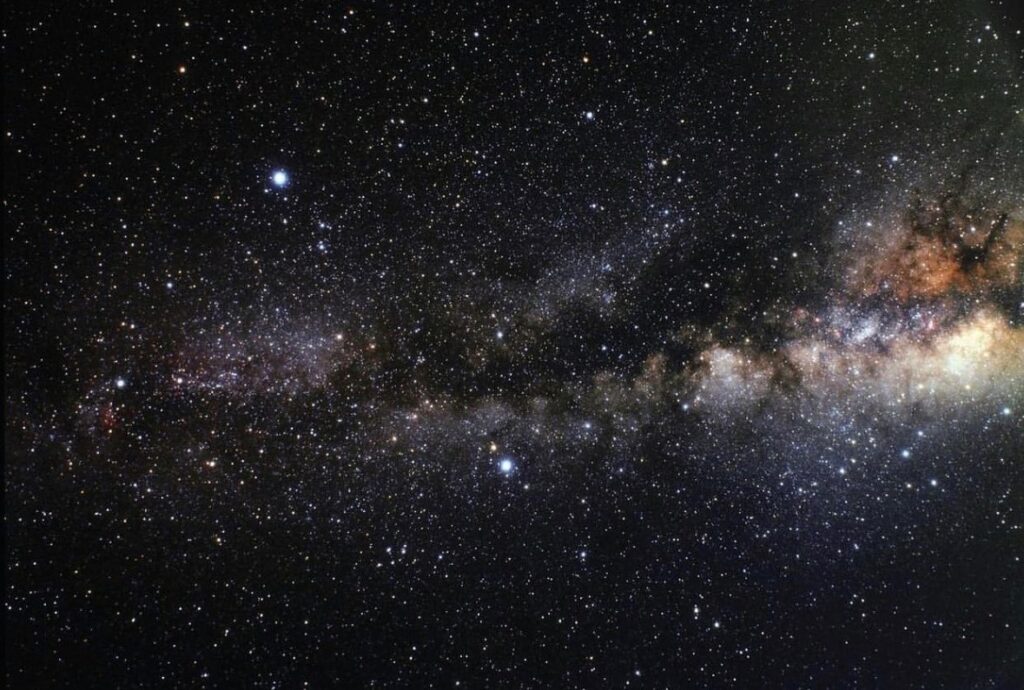Summer Stargazing
July 24, 2023
Posted by Lake Erie Nature and Science Center

The recent Summer Solstice on June 21 was the longest day of the year with over 15 hours of daylight. As the days gradually become shorter throughout the warm summer months, there is plenty of time to enjoy summer stargazing.
Visible Planets
Low in the west, just after sunset, is the bright planet Venus. The hottest planet in our Solar System, with a dense, harsh, poisonous atmosphere, makes a beautiful sight in our evening skies. Not sure if what you are seeing is a planet? See if it twinkles. Stars twinkle because of the effects of temperature and density variations in our atmosphere – planets, do not.
If you are an early riser, the planets Jupiter and Saturn are bright in the sky before sunrise. Saturn is about 35-40 degrees above the horizon due South and Jupiter is lower in the sky to the East. With exception for the Moon, these planets will be the brightest objects in the sky.
Constellations
In the low southern skies are Scorpius and Sagittarius. Located below 30 degrees to the horizon, you will need a clear view with no trees to observe these constellations. Sagittarius is easily found with the naked eye as its brightest stars form a shape resembling a Teapot. If you are far enough from the city lights, you can see the disk of our Milky Way galaxy appearing as a cloud of “steam” coming out of its spout.
Follow this path of the Milky Way upwards, away from the horizon, where you will see constellations Aquila (the Eagle), Lyra (the Lyre), and Cygnus (the Swan) also known as the Northern Cross. The brightest stars in these constellations, Vega (Lyra), Deneb (Cygnus), and Altair (Aquila) form a shape known as the Summer Triangle, which is a great tool to orient yourself in the night sky.
Stargazing Tips
Try to minimize use of your gadgets when viewing the night sky. While these are convenient tools, the brightness of the screen has a detrimental effect on your night vision. Typically, it can take 20 to 30 minutes for your vision to adapt to the night sky. Once this happens, you will be amazed at the number of stars and details you can see. Paper maps and red light flashlights are helpful accessories with little effect on your night vision.
Share your observations with others. You are encouraged and, because of your passion, you are empowered to do so. It is perfectly acceptable to enjoy stargazing no matter your level of scientific knowledge.
Interested in learning more about astronomy and connecting with peers? Join Lake Erie Nature & Science Center for Astronomy Club and explore the world of astronomy in a fun, social environment. Learn what’s new in space, the latest gadgets, astro-tainment, and mind-blowing facts. Astronomy Club meets on the third Wednesday of each month. Those interested are welcome to enjoy their first meeting at no cost. Learn more at www.lensc.org/planetarium.

